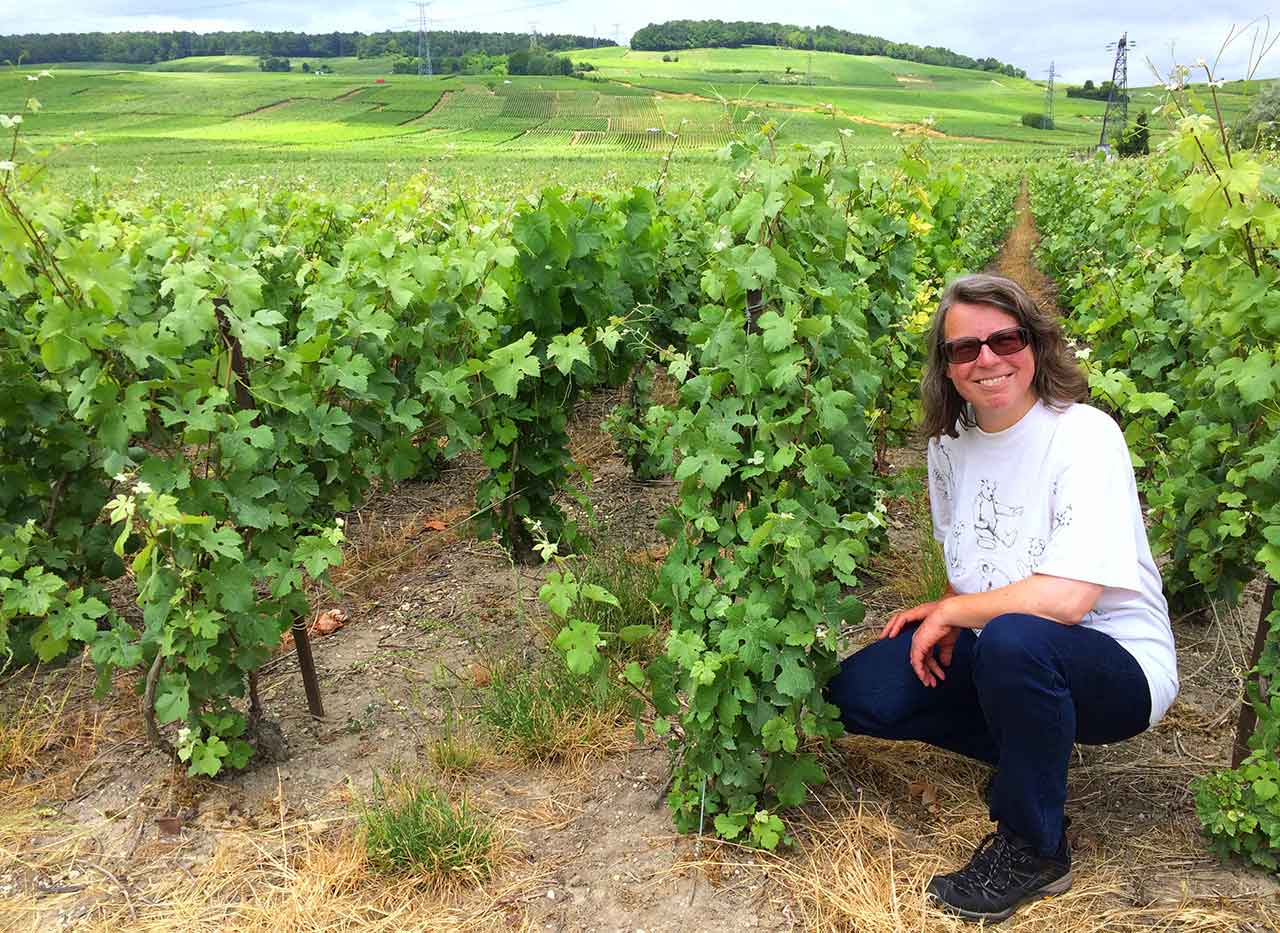CA
Short for Cooperative Agricola, a Spanish wine cooperative.
Cabernet Franc
An important black grape variety often blended with Cabernet Sauvignon or Merlot (it is related to both).
Cabernet Sauvignon
The world's most common wine grape. "Cab Sauv" wines commonly have blackcurrant flavours.
Cane pruning
Method of vine pruning which cuts growth back to the main stem allowing fresh growth to carry fruit each year.
Canopy
The parts of a grapevine which are visible above ground.
Cantina
Italian for winery.
Cantina sociale
Italian for cooperative.
Cap
A screw-off closure for a wine bottle.
Cap classique
South African term for a wine made using the methode traditionelle.
Capsule
The plastic or foil cover over the top of the bottle.
Carbonic maceration
Fermentation process where whole bunches of grapes are fermented in a sealed vessel, resulting in notably soft and fruity wines. Widely used in the Beaujolais region. Also known as whole bunch maceration.
Cascina
Italian term for a winery.
Case
Twelve bottles of wine.
Cask
Large vessel which contains wine during fermentation or aging.
Casta
Portuguese term for grape variety.
Caudalie
A measure of the length of time the wine's flavour persists in the mouth.
Cava
Spanish white sparkling wine made by the methode traditionelle.
Cave
Underground wine storage area.
CDP
Short for Chateauneuf-du-Pape, a French wine region.
Cedar
Fresh and spicy aromas and flavours are sometimes described as being like those of cedar wood.
Cellar
Storage area where wine is stored and aged.
Cellared
Wines that have been stored in a wine cellar, the implication being they have been there for a considerable time.
Cellar rat
Nickname for someone who tends wine in a cellar.
Cépage
A French word meaning a grape variety or varieties.
Cerasuolo
A cherry red wine from Sicily.
Chablis
A French wine region known for its white wines, which is part of the Burgundy region.
Chai
A French word for a wine store or shed.
Chambré
Allow wine to rest in the room where it is to be served, allowing the temperature to rise a little and the sediment to settle out. From the French word chambre, meaning room.
Champagne
Sparkling wine from the Champagne region in northern France. Often used as a generic term for sparkling wine, but strictly speaking only wine from the region should be called Champagne.
Champagne wire
The wire cage over the cork on a Champagne bottle. Also called a muselet.
Chaptalisation
Adding sugar to grape juice before it is fermented, often to compensate for the grapes being under-ripe.
Chardonnay
French grape variety now widely planted across the wine world.
Charmat method
Method of making sparkling wine where the secondary fermentation that produces the fizz takes place in a tank rather than in the bottle.
Chateau/chateaux
Chateau is the French word for a wine-making estate. Chateaux is the plural.
Chateauneuf du Pape
A French AOC around the town of the same name in the Rhône valley in southern France.
Chenin Blanc
Adaptable white grape variety originally from the Loire valley in France.
Chewy
Chewy wines are high in tannins.
Chianti
Wine region in Tuscany, in north west Italy.
Chiaretto
A pale Italian rosé produced on the banks of Lake Garda in Lombardy.
Citric acid
Weak acid found in citrus fruits, sometimes added to wine to increase its freshness or clear hazes.
Clairet
A French word for a light red wine.
Claret
British term for wine from Bordeaux, or more generally wine in the Bordeaux style.
Clarification
Removing solid matter from the wine.
Classic
German white wine classification. Also used to describe wines which are more old-fashioned in style, with less fruit and alcohol.
Classico
Italian term indicating wine from the historical centre of a region, eg Chianti Classico.
Clay soil
Heavy, moisture-retentive soil. Vines grown on clay tend to ripen fruit more slowly, leading to more complex flavours with acidity and tannin.
Cleanskin
Australian term for cheap bottled wine sold in bulk and not carrying a label indicating the producer.
Climat
A French term for a plot of land with specific growing conditions which makes a distinctive wine.
Clos
A traditional vineyard surrounded by a wall.
Closed
Term used for a young wine where the flavours are yet to develop.
Closure
The device that seals the bottle, usually a cork (natural or synthetic) or a screw cap.
Cloying
Excessively sweet and rich wines, lacking in acidity.
Cluster
A bunch of grapes.
CNDP
Short for Chateauneuf-du-Pape, a French wine region.
Coarse
Wines with a rough texture and often an astringent flavour.
Coates' Law
Developed by Clive Coates MW, the Coates Law of Maturity states that a wine remains at its peak of quality for the same amount of time that it takes to mature to that peak. So if the wine reaches its peak at five years old, it will remain at its peak for another five years.
Cognac
Type of brandy produced in the Cognac region in western France.
Cold fermentation
Fermentation naturally creates heat, but in cold fermentation the temperature is artificially controlled to slow the fermentation process, giving the wine greater fruitiness and freshness.
Cold maceration
Another term for cold fermentation.
Colheita
Portuguese for harvest.
Colour
The appearance of the wine. White wine can vary from almost colourless to distinctly yellow or green, rosé from pale pink to light red, and red wine from pale to dark red or purple. Older wines tend to take on a brown tinges. To assess the colour of a wine, pour a small amount into a glass and tip the glass so the edge of the liquid can be seen more easily. Place a piece of white paper or card behind the glass so the colour is easier to see.
Commercial wine
Mass-produced wines made to a consistent, easy-drinking style.
Commune
A small wine-producing area centred on a village.
Complexity
A complex wine has many different flavours and aromas.
Compte
System used in Armagnac and Cognac for measuring the age of a spirit. 00 is used for freshly-distilled spirit. A VSOP brandy is 4, and a very old XO brandy would be 10.
Concentrated
Wines with rich, deep flavours.
Congeners
Alcohols and aldehydes in wine other than basic ethanol. These add to the flavour and character of the wine. Also known as fusel oils or fusel alcohols.
Consorzio
An Italian term for a group of wine producers.
Cooperative
Wine producer jointly owned by a number of growers.
Cooked
A wine that has been subjected to high temperatures during storage. Also a wine tasting term that can indicate the wine's flavours are mellow rather than fresh.
Cordon
Vine pruning system where horizontal branches are left on the vine to carry spurs on which the fruit grows.
Cork
Wine bottle stopper traditionally made from wood of the cork oak and removed using a cork screw. A synthetic cork is made from a plastic resin.
Corkage
Fee charged by a restaurant for keeping and serving a wine.
Corked
A fault where the wine has been tainted by compounds such as TCA, which can be found in corks. The result is mouldy, musty aromas. Does not mean that the wine has cork crumbs in it due to the stopper disintegrating on removal.
Cosecha
Spanish for vintage.
Côte
French for hillside.
Coteaux
French for a series of hillsides forming a region.
Coulure
Where the flowers on the vine fail to open, or quickly drop off, preventing pollination. This reduces the number of grapes formed on the vine.
Country wine
A quality rating one step up from table wine, such as the French vin de pays. Also a term used for (often home-produced) wine made from something other than grape juice.
Courtier
A wine broker who acts as an intermediary between wine produces and wholesalers.
Creamy
Wine tasting term which can suggest vanilla flavours created by maturing in oak, or can refer to smoothness and a silky mouth feel.
Crémant
French sparkling wines made using the same method as Champagne, but outside the Champagne region.
Crianza
Spanish wines which have been matured in oak.
Crisp
Wines which have high levels of acidity.
Cru
French word for growth.
Cru Artisan
Bordeaux wine classification below Cru Bourgeois.
Cru Bourgeois
Bordeaux wine a step down from the fine Cru Classé.
Cru Classé
Bordeaux's original classification of the finest chateaux.
Crush
A grape harvest.
CS
Short for cantina sociale, an Italian term for a wine cooperative.
Cuvaison
The period during fermentation when the wine is left in contact with the grape skins, seeds and flesh. The longer this is the more intense the colour and flavour.
Cuve Close
Sparkling wine made by a secondary fermentation in a tank rather than in the bottle. Also known as the Charmat method.
Cuvée
French word for a vat or tank. Generally refers to a specific production or bottling.
Cuverie
French word for the room where fermentation takes place.
Cuvier
Another French term for the place where fermentation happens.
CV
Short for Coopérative de Vignerons, the French term indicating that the wine is made by a cooperative.






